Virtual Conference Series
The CANNT Virtual Conference Series will take place October 20 – Dec 1, 2020 every Tuesday and Thursday from 2:30-3:30 ET and repeated at 6:30-7:30 ET * to maximize attendance opportunities. All Thursday Industry webinars are complimentary to all! Attend entire series and you could receive up to 11 Continuous Learning Credits!
* all sessions may not be repeated – see schedule below
Registration Rates
| CANNT Member | Complimentary |
| Non-Member – Full Series | $125.00 + HST |
| Non-Member – Per Day Rate Register for Full Series and save $10.00 | $30.00 + HST |
Only CANNT Members will have access to recorded sessions post virtual series. Register as a member and receive entire virtual series complimentary! That’s a $45.00 savings!
Tuesday, October 20, 2020
Presenters:
Chantelle Nielson, RN, MSc., Toronto General Hospital – UHN, Toronto, ON
Alicia Jones, RN, MN
Abstract:
Background: Frontline clinicians identify code blue events as one of the most stressful situations that occur in daily practice leading to clinician burnout. Studies indicate that the use of debrief sessions as a learning and support tool dramatically improve team performance and positively influence patient outcomes, yet they rarely occur on inpatient units. The aim of this quality improvement project is to identify barriers to debriefing, implement a tool to facilitate debrief sessions, and support staff in leading the debrief tool.
Methods: A needs assessment was conducted to determine: staff skills for code blue resuscitation; perceptions of teamwork; confidence to facilitate debrief sessions; and perceived barriers and enablers to debriefing. A code blue debrief tool was created and implemented in the Multi-Organ Transplant Unit. Education sessions were held to educate staff on the debrief tool, document on the Resuscitation Record, and empower the facilitation of debriefs.
Results: After education sessions and tool implementation, 71% of staff felt comfortable to facilitate debriefs (from 32% pre-education), and debriefs occurred after 66% of code blue events on the unit. Staff identified that the tool was successful to facilitate short debriefs (5-10 min).
Conclusion: One hundred percent of transplant staff want debriefs after code blue events. This presentation will describe the implementation process of a debrief tool on the unit, early successes, and lessons learned.
Presenters:
Kevin Barlow MN,RN, St. Michael’s Hospital, Toronto, ON
Elizabeth Mitches, ATPL – St. Michael’s Hospital, Toronto, Ontario
Alison Thomas MN, NP, CNeph (C), St. Michael’s Hospital, Toronto, ON
Leora Wanounou MN, NP CCN(C),St. Michael’s Hospital, Toronto, ON
Abstract:
Purpose: Hemodialysis (HD) patients are at risk for adverse events during treatment due to procedural complexity, complications, and busy work environments. Thomas et al. (2014) evaluated the feasibility of a safety checklist centered on the HD treatment. Despite demonstrated feasibility, there were challenges with its implementation. A revised 1-minute time out checklist was created based on error and omission rates to address common risk factors. The goal is to reduce errors and omissions through review of items at the start of the HD session.
Description: A former HD patient with expertise in the airline industry provided guidance for checklist development and delivery. It takes less than one minute to administer the tool pre-dialysis, and it includes: correct dialyzer and dialysis mode, recent interventions and events, (vascular) access, laboratory samples, code status, (new or revised) orders, medications for delivery during treatment, and allergies. Staff education was provided, and feedback was encouraged. PDSA cycles were used to trial the tool and make adjustments based on feedback. Broad roll-out of this project will occur in Spring 2020.
Evaluation and Outcomes: Retrospective data on omitted lab tests and medications for six months prior to implementation demonstrated an average of 19 lab errors per month. We will continue to track lab errors six months post implementation to quantify the impact of the project. We will also conduct patient and staff safety surveys pre and post implementation.
Implications for nephrology practice/education: The 1-Minute Time Out is a patient safety initiative that is generalizable to other HD programs.
Thursday, October 22, 2020
- Identify the mechanisms by which patients with CKD develop hyperphosphatemia
- Describe the impact of uncontrolled hyperphosphatemia on morbidity and mortality in the CKD population
- Explain the major components of the management of hyperphosphatemia
- Counsel patients on how to reduce dietary intake of phosphate
- Describe the key characteristics of traditional phosphate-binding agents & of a new alternative for phosphate management— sucroferric oxyhydroxide
Tuesday, October 27, 2020
Presenters:
Patty Quinan, RN, MN, Clinical Nurse Specialist – Vascular Access Coordinator, CNeph (c)
Dr. Edwin Zhang, MD, FRCPC, Vascular/Interventional Radiologist, Humber River Hospital, Toronto, ON
Abstract:
Patty Quinan, MN, RN, CNeph(C), Clinical Nurse Specialist – Vascular Access Coordinator, Humber River Hospital, Toronto, Ontario
Dr. Edwin Zhang, MD, FRCPC, Vascular/Interventional Radiologist, Humber River Hospital, Toronto, Ontario.
Background/Purpose of research problem: Historically, all patients scheduled for dialysis access procedures in interventional radiology (IR) were instructed to hold all anticoagulation medications. Updated international anticoagulation guidelines for IR procedures based on risk of bleeding associated with procedure type prompted a review of current practices and protocols.
Description: In collaboration with IR staff, review of updated international anticoagulation guidelines, led to the development of local standardized anticoagulation guidelines based on best practices and to ultimately improve patient care outcomes. IR procedures are categorized as low, standard, and high-risk and include INR and platelet target parameters for each procedure. Low risk procedures include fistulogram and angioplasty and central venous catheter exchanges (INR < 3.0); standard risk procedures include central venous catheter insertions (INR < 2.0) and peritoneal dialysis catheter procedures (INR < 1.7); and high-risk procedures include central venous angioplasties (INR < 1.5). Aspirin and Plavix are allowed for all procedures and anticoagulants need to be held for standard and high risk procedures.
Outcomes: We have developed and successfully implemented standardized protocols and written patient instructions for dialysis access procedures for nurses, nephrologists, IR staff, and patients. Based on our quality improvement, patients on warfarin are only required to hold medications if the INR is above the target parameter for the procedure. This has resulted in fewer patients requiring bridging with low molecular weight heparin and repeat blood work or venipunctures; more timely procedures and utilization of designated IR spots, and less inconvenience for patients and family.
Implications for nephrology practice and education: Other programs that wish to examine their current practices and develop local changes and protocols for dialysis access procedures in IR, may consider our quality improvement initiative and standardized anticoagulation guidelines.
Presenters:
Mary Smith, PhD, NP – PHC, Queen’s University, Kingston, ON
Abstract:
Mary Smith, PhD, NP – PHC, Queen’s University, Kingston, ON
Background and Purpose: Previously as a doctoral nursing student, I conducted a research initiative in First Nation communities concerning health care in relation to kidney disease and organ transplantation. Having familial experiences within a First Nation community involving kidney organ donation and dialysis, the research became a heartfelt journey where the methodology and methods were inspired by the community and traditional ways. The purpose of this presentation is to share learning about Indigenous methodologies and methods that are considered integral to kidney research aimed at improving kidney health for Indigenous people.
Methodological methods that arise from community relational and contextual traditions and protocols are professed as ethical approaches towards meeting community expectations. Such methods include sharing circles that involve elders and ceremonial and traditional approaches including prayers, smudging and storytelling. Sharing circles are central to ceremonies and foster relational strengths and resiliency.
Results: Sharing circles brought forth the underlying themes concerning the need for equitable access to dialysis and transplantation, cultural safety, relationality and Indigenous knowledge. More learning through research involving Indigenous methodologies is needed.
Conclusions: Through the research it is realized that health disparities are deeply linked with the broader underlying factors including the entrenched colonial political and social systems emanating from historical injustices. Culturally safe care and Indigenous traditional protocols are essential to kidney health. Research where methodology and methods are congruent with ways of knowing and being transpire into outcomes that benefit the community.
Thursday, October 29, 2020
Presenters:
Dr. Jo-Anne Wilson, BSc. Pharm, ACPR, PharmD, Clinical Pharmacy Coordinator, Division of Nephrology, Dept of Medicine, Nova Scotia Health Authority; Associate Professor, Faculty of Health, College of Pharmacy, Dalhousie University
Objectives:
- Review the clinical burden of hyperkalemia in patients with chronic kidney disease
- Describe the current challenges to managing hyperkalemia using existing therapies in Canada
- Discuss the role of Novel K+ binders and identification of appropriate treatment approaches to correct and maintenance potassium; and
- Discuss the role of hypoxia-inducible factor prolyl hydroxylase inhibitors (HIF-PHIs) to reduce the burden of anemia
Tuesday, November 3, 2020
Presenters:
Jessica Carreira BScN, MSN, CNS, Thunder Bay Regional Health Science Centre, Thunder Bay, ON
Abstract:
Jessica Carreira BScN, MSN, CNS, Thunder Bay Regional Health Science Centre, Thunder Bay, ON
Background: Patients on peritoneal dialysis (PD) in Northern Ontario face many challenges related to social determinants of health. Patients live in remote communities that are only accessible by plane or ice roads. Such social determinants of health that PD patients confront include safe housing, clean environment, and access to healthcare. PD training is conducted, and patients are supported to accommodate these challenges. The Thunder Bay Regional Health Science Centre (TBRHSC) PD unit does not deem any patient unsuitable for PD despite the many social challenges patients face.
Objective: To identify strategies implemented by the TBRHSC renal team to assist remote communities to provide widespread access to PD. To conduct ongoing needs assessment in the communities to plan future strategies/interventions to make PD sustainable for Northern Ontario patients who elect to receive care as close to home as possible.
Methods: In a review of training strategies, it was determined that training strategies are evidenced- based and always adapted to meet specific patient needs. For example, when patients do not have running water at home, techniques differ to ensure good hand hygiene. When there are multiple family members living in small homes, education regarding a safe environment is extremely important. The TBRHSC PD Unit health care team assess each patient’s situation and adapts the training schedule and plan of care accordingly.
Results: Currently 50% of PD patients live remotely and face multiple challenges influencing the social determinants of health. Continued communication with PD nurses, Aboriginal liaisons, relationships with the community nursing stations, and consolidated appointments, allow these patients to be on PD.
Conclusions: The TBRHSC PD unit often support patients to go on PD when there are many barriers. By using unique strategies and adapting training methods, patients are able to start and stay on PD in their communities.
Presenters:
Marjan Kasirlou, MBA, BScN, RN – Humber River Hospital, Toronto, Ontario
Vlad Padure, MScN, NP-PHC – Humber River Hospital, Toronto, Ontario
Anjalie Shivakumar, MN, BScN, RN – Humber River Hospital, Toronto, Ontario
Abstract:
Marjan Kasirlou, MBA, BScN, RN – Humber River Hospital, Toronto, Ontario
Vlad Padure, MScN, NP-PHC – Humber River Hospital, Toronto, Ontario
Anjalie Shivakumar, MN, BScN, RN – Humber River Hospital, Toronto, Ontario
Approximately 18% of all chronic hemodialysis patients reside in retirement residences and long-term care (Nesrallah et al., 2018). The transportation to and from dialysis poses both psychological and physiological stressors on patients, and has a significant financial impact on the system. The risks associated with commuting include infections, musculoskeletal injuries, changes in mood, and mental status. In 2015, the estimated cost of medical transportation for dialysis patients equaled approximately 17 million dollars (TTC, 2020). Applying the model of personal support worker (PSW)-assisted home hemodialysis to nursing and long-term care homes offers a safer, cheaper, and person-centered alternative.
Humber River Hospital (HRH) was able to pilot this model with a 94-year old patient living in a retirement home. Beyond the physical exhaustion associated with commuting to dialysis by Wheel-Trans three times per week, his main fear was leaving his wife with dementia behind at the nursing home.
Retirement and long-term care facilities forbid any type of plumbing and electrical modifications required for traditional home hemodialysis equipment. Additional reasons for excluding home dialysis from institutional care settings include staffing resources, risk of property damage, and insurance liability. The infrastructure barriers were eliminated by using the NxStage System One with Pre-Mixed Dialysate Bags. The dialysis set up, treatment, and patient monitoring is performed by a specially trained PSW. Through remote monitoring, the HRH Home Dialysis team can assess the patient’s condition and treatment event.
This pilot project proved the viability of PSW-assisted dialysis in retirement and long-term care homes, and resulted in the expansion of the model on a broader scale.
References:
Nesrallah, G., Dixon, S., MacKinnon, M., Jassal, V., Bota, S., Dirk, J., Arthurs, E., Blake, P., Sood, M., Garg, A., & Davison, S., (2018). Home palliative service utilization and care trajectory among Ontario residents dying on chronic dialysis. Canadian Journal of Kidney Health and Disease, 5(20).
Toronto Transit Commission (2019). Annual Report. Retrieved from: https://www.ttc.ca/PDF/About_the_TTC/Annual_Reports/TTC_AnnualReport_2019_2020-06-23_w_pagenumbers_R2_single_pag.pdf
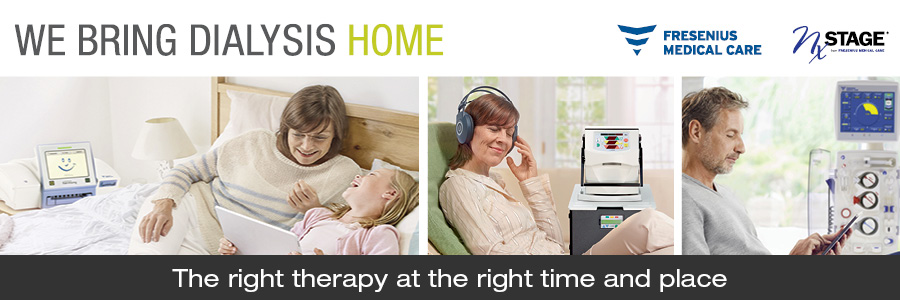
Thursday, November 5, 2020
Presenters:
Andreas Pierratos, MD, FRCPC, Nephrologist, Humber River Hospital, Professor of Medicine, University of Toronto
Vlad Padure, Program Director, Medicine & Nephrology, Humber River Hospital
Description:
The COVID-19 pandemic provided an opportunity to dialyze patients living in retirement and long-term care (LTC) within their residing facilities. Beyond the infection prevention and control goals, dialyzing patients in the LTC facilities offered several clinical and financial benefits.
Patients residing in LTC and retirement living, traditionally visit the dialysis unit three times per week for conventional dialysis. These patients have a high comorbidity and mortality index along with poor functional status, making them suboptimal candidates for conventional hemodialysis. Transportation to the dialysis unit carries significant physical and psychological burden in addition to the high service cost to the system.
Humber River has an established home dialysis program and longstanding experience utilizing Personal Support Workers (PSWs) in administering the dialysis treatment in patients’ homes. NxStage System One has been successfully used at HRH for short daily home hemodialysis. At the height of the pandemic, we transitioned four in-center hemodialysis patients to receiving PSW assisted dialysis within the LTC facilities.
To date, 16 patients have participated in the PSW assisted model of care. This webinar will review the model created to administer the dialysis therapy in the LTCs and share our implementation experience that demonstrates that PSW-assisted daily dialysis in LTC using NxStage is feasible, safe, and affordable.
Tuesday, November 10, 2020
Presenters:
Richard Cowin, St. Joesph’s Healthcare Hamilton, Hamilton, ON
Abstract:
Richard Cowin BSc, Senior Nephrology Technologist, St. Joseph’s Healthcare Hamilton, Hamilton, ON
Ama Ohene-Nyako, Clinical Nephrology Technologist, St. Joseph’s Healthcare Hamilton, Hamilton, ON
Throughout the history of renal care, a lot has changed to better serve our patients. In a relatively short amount of time, medical devices have advanced, critical care practices have evolved, and at St. Joseph’s Healthcare Hamilton (SJHH), nephrology technologists have become an advanced group that combines technical and clinical expertise in order to optimise the care of our patients. SJHH has expanded the traditional biomedical role of a nephrology technologist and combined it with . Along with the usual maintenance and repair of dialysis and water treatment equipment , nephrology technologists registered through SJHH, are clinically trained and assume some of the functions traditionally carried out by nurses in the dialysis unit. This nurse-tech model of care has proven to be effective, flexible, and beneficial to both our department and organization.
In addition, a select group of clinical technologists assist in organ recovery for kidney transplants. They facilitate the packaging, storage, and shipping of kidneys for transplant, and they coordinate deceased donor transplants, allowing the transplant nurse coordinators to focus their efforts on vital workup and waitlist activities.
Through nursing and patient feedback, SJHH has carefully developed the clinical technologist role into becoming one that could benefit all renal facilities. By utilizing technologists in a clinical environment, we have assumed an active role in the renal journey of our patients, alleviated staffing pressures whilst maintaining excellent care, and are in a unique and innovative position looking toward the future.
Presenters:
Vlad Padure, NP-PHC, MScN, Humber River Hospital, North York, ON
Abstract:
Vlad Padure, NP-PHC, MScN,– Humber River Hospital, Toronto, Ontario
Humber River Hospital (HRH) has implemented a novel peritoneal dialysis (PD) clinic bundle in 2017 when the peritonitis rate reached 0.5 cases per year. The implementation of the clinic bundle resulted in a significant reduction of peritoneal infections to 0.10 cases in 2018/19. Following this success, the team wanted to know if the improvements could be sustained over the ensuring 12-months.
The bundle included an initial home assessment for all potential PD patients and regular home visits every four months. Through these visits, the clinical team was able to identify environmental risk factors and poor aseptic technique when patients were connecting to the cycler or twin beg. The third strategy was to retrain patients after a peritonitis event. The PD team regularly participated in weekly patient review rounds and in a case review ensuing each peritonitis case to identify the root cause and mitigating strategies.
The peritonitis rate continued to decrease over the ensuing 12 months from 0.10 cases per year at risk in Q2 18/19 to 0.08 in Q2 19/20. This proved that the continued utilization of the clinic model and a culture of continuous QI not only sustained the results, but also led to a statistically significant improvement in the peritonitis rates.
Presenters:
Jennifer Latulippe RN, BScN, MN, CNeph(C), Department of Nursing Education, St. Joseph’s Healthcare Hamilton, Hamilton, ON
Adam J Prieur OStJ, BScN, BA, RN, CNeph(C), Department of Nursing Education, St. Joseph’s Healthcare Hamilton, Hamilton, ON
Abstract:
Jennifer Latulippe, MN, RN, CNeph(C) – Department of Nursing Education, St. Joseph’s Healthcare Hamilton, Hamilton, ON
Adam J Prieur, OStJ, BScN, BA, RN, CNeph(C) - Department of Nursing Education, St. Joseph’s Healthcare Hamilton, Hamilton, ON
Purpose:
St. Joseph’s Healthcare Hamilton (SJHH) partnered with Brantford Community Healthcare System (BCHS) to provide in-hospital nephrology services to patients in the Critical Care Unit (CCU) at Brantford General Hospital (BGH). The BGH outpatient hemodialysis (HD) unit became responsible for performing inpatient treatments, and a comprehensive education program for outpatient HD nurses was launched.
Description:
The Brantford satellite hemodialysis nurses required education and resources in preparation for their new role. Stakeholders were consulted to determine educational needs. An educational program, targeted at BGH HD nurses, was enacted.
Outcomes:
In-person presentations were delivered in advance of the launch of the service expansion. Anecdotally, nurses reported that they were satisfied with the availability of online reference materials and quick reference guide. Some nurses had recommendations for expansion of the quick reference guide to include additional content, and these pages were added. The program launched and remedial measures were not required, which was viewed as an indicator of success.
Implications for nephrology practice:
Possible future nursing shortages, particularly those specializing in nephrology, may require renal programs to review and adjust their current staffing and care delivery models. Staffing pressures and events such as the COVID-19 pandemic may necessitate provision of HD treatments in new settings, such as hospitals and long-term care facilities that do not have an established HD program. To provide care in changing practice settings HD nurses must be prepared and supported, both in practice and perception, and a robust educational strategy must be developed and enacted to ensure success.
Thursday, November 12, 2020
Presenter
Navdeep Tangri, MD, PhD, FRCP, Associate Professor in the Division of Nephrology, Department of Medicine and the Department of Community Health Sciences, University of Manitoba
Objectives
- Describe recent updates to the KFRE and kidneyfailurerisk.com
- Highlight new equations to predict incident CKD in patients with normal kidney function
- Present new equations to predict 40 % decline in eGFR
Tuesday, November 17, 2020
Panelists:
Craig Lindsay (Moderator)
Programs Coordinator
Kidney Foundation of Canada – Ontario Branch
Sadia Baig, B.S.W – Kidney Patient
Programs Coordinator – Ontario Branch
Kidney Foundation of Canada
Shannon Fogarasi, MSW.,RSW
Clinical Service Manager- Etobicoke Renal Centre
Ethel Macatangay, RN, BScN, CNeph (C ), MHS(M)
Patient Care Director-Nephrology & Chronic Disease Management
Scarborough Health Network
Lori Vanwyk – Transplant Recipient
Peer Support Group Facilitator
Kidney Foundation of Canada – Ontario Branch
Description:
Engaging renal patients and their families in self-management and encouraging them to be active partners in their own care is understood to be both valuable and a challenge. It is, however, just the beginning of the journey toward making patients co-designers of their care “chairside” , at the program planning level, and ultimately at policy creation tables.
Renal professionals and patients with lived experience meet on this panel to discuss strategies to engage, and ultimately empower patients for better outcomes and a more positive care experience. Hear from patients themselves how they want to be seen as equals and how their experiences and perspectives can inform better, safer, more patient-centred care.
Objective:
- Learn strategies to safely and purposefully partner with patients.
Thursday, November 19, 2020
Presenters:
Jordan Weinstein, MD, FRCPC, Associate Professor of Medicine, University of Toronto; Nephrologist, St. Michael’s Hospital; Director, UKidney.com
Objectives:
At the conclusion of this learning activity, participants will be better able to:
- Identify populations at risk for hyperkalemia
- Recognize the consequences of hyperkalemia on patient health
- Develop individualized management strategies of hyperkalemia that align with recent clinical data, practice patterns, and available therapies
Tuesday, November 24, 2020
Members will be sent the virtual login details.
Thursday, November 26, 2020
Presenter: Dr Panagiotis M. Kitrou, MD, MSc, PhD, EBIR, Assistant Professor of Interventional Radiologist, Department of Diagnostic and Interventional Radiology, University Hospital of Patras, Greece
Abstract: Surgical creation of a radiocephalic fistula is the gold standard of vascular access for hemodialysis. Recently, an endovascular approach for upper arm fistula creation (endoAVF) has been developed, The WavelinQ™ 4F EndoAVF System is designed to provide a versatile endovascular AV fistula creation alternative to open surgery. Using two thin, flexible, magnetic catheters and a burst of RF energy you can create an endovascular AV fistula. The objective of this presentation is to highlight the possible benefits of creating an Endovascular AVF, explaining the types of Endo AVF that the WavelinQ™ device can create, the importance of Ultrasound screenings in assessing patients, the working mechanism of the device, cases overview and cannulation techniques for patients with endovascular AVF.
Tuesday, December 1, 2020
Presenter:
Susan McMurray, Clinical Consultant, Renal, Baxter Corporation, Mississauga, Ontario
Abstract:
Susan McMurray, Clinical Consultant, Renal, Baxter Corporation, Mississauga, Ontario
What does peritoneal dialysis (PD) adequacy mean to you? To many, it means achieving a specific clearance measurement regardless of the impact on the patient’s lifestyle. The objective of this presentation is to examine current literature and the 2020 ISPD practice recommendations to promote a move from “adequate” to “goal-directed” patient care which may include modifying PD prescriptions.
Historically, guidelines focused on clearance of toxins and used a measure of waste product removal by dialysis. There have been several studies that have had significant impact on our perceptions of adequacy and have reshaped the definition of adequacy in peritoneal dialysis. Blake and Brown1 (2020) describe using shared-decision making between the medical care team and the person doing PD to achieve his/her own life goals. The PDOPPS study2 (2020) describes how PD can be prescribed in a variety of ways to focus on patient wishes. Finally, research guides us to evaluate patient well-being in the areas of quality of life, volume status, nutritional status, anemia management, small solute removal and bone and mineral management.
Implications for nephrology care include a re-evaluation of current practice in peritoneal dialysis to include a tailored PD prescription with a person-centered focus, which minimizes symptoms and treatment burden while ensuring high-quality care is provided.1
References:
- Edwina A Brown, Peter G Blake, et al., International society for peritoneal dialysis practice recommendations: Prescribing high-quality goal-directed peritoneal dialysis, Perit Dial Int., 2020; 1-10.
- Wang AY-M, Zhao J, Bieger B, et al. On behalf of PDOPPS dialysis prescription and fluid management working group. International comparison of peritoneal dialysis prescriptions from the peritoneal dialysis outcomes and practice patterns study (PDOPPS). Perit Dial Int. Epub ahead of print 2020.
- Blake, PG., et al. Canadian society of nephrology guidelines/recommendations. Perit Dial Int., 2011; Vol. 31, pp. 218-239.
- Lo, Bargman, Burkart, Krediet, Pollock, Kawanishi, Blake, et al. International society for peritoneal dialysis guidelines/recommendations; guideline on targets for solute & fluid removal in adult patients on chronic peritoneal dialysis, Perit Dial Int., 26, No. 5, Sept 2006, pp. 520-522.
Thank you to our Corporate Sponsors for making this Virtual Series possible!
Platinum
Platinum
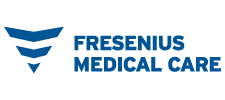
Platinum

Platinum
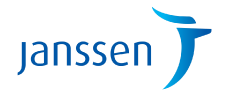
Gold
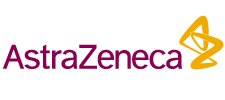
Gold

Silver
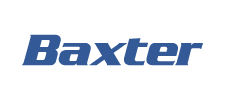
Silver


